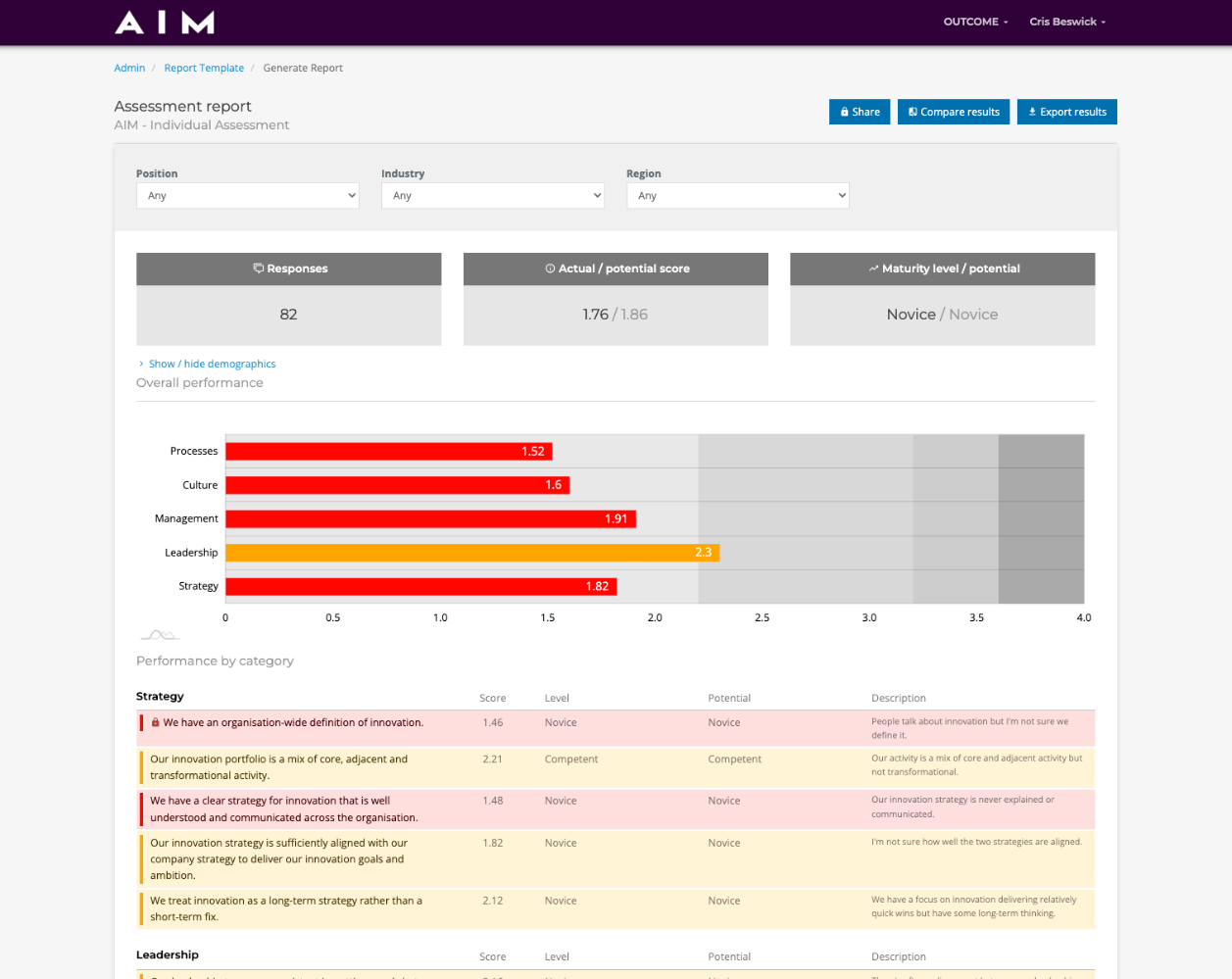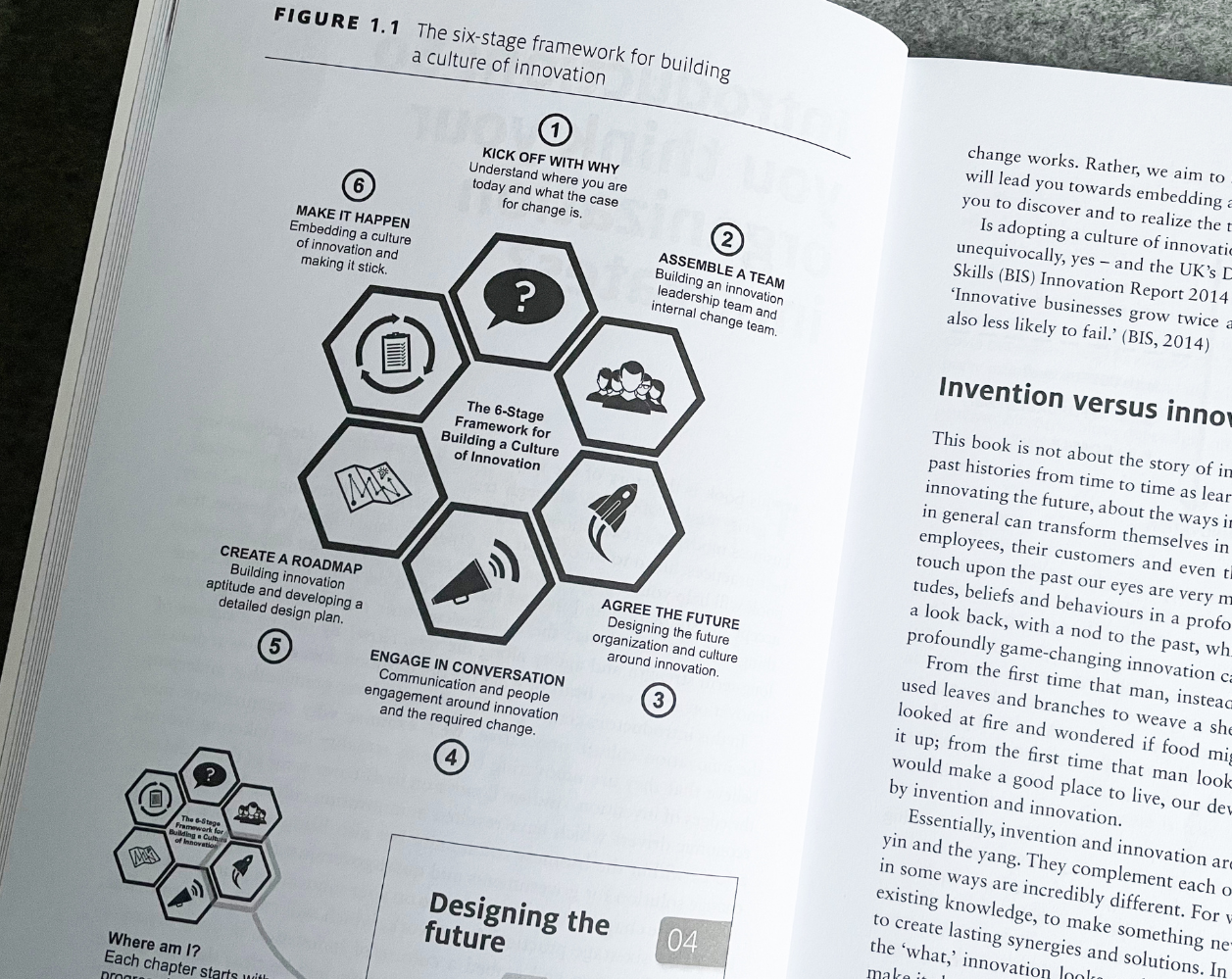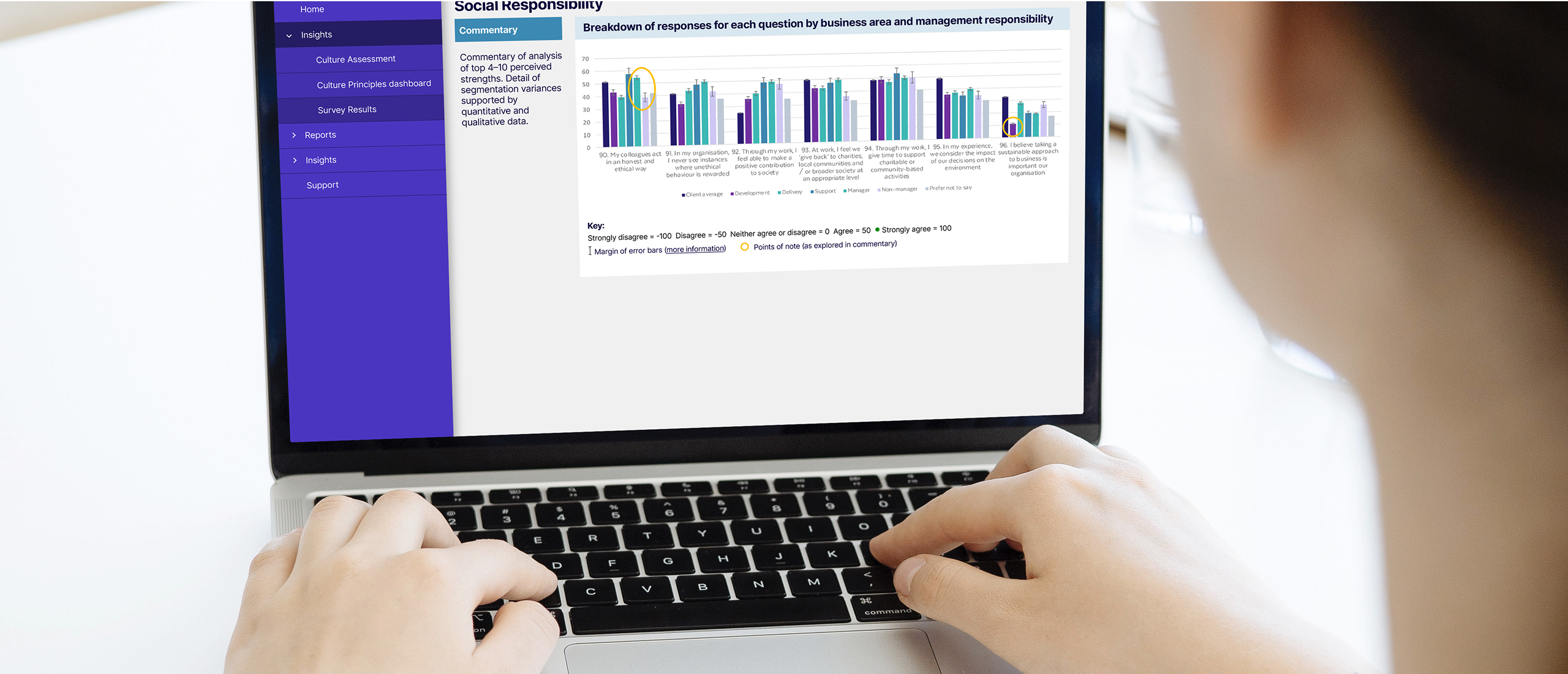Case study - innovation
With a history tracing back almost 300 years, our client was no stranger to innovation. As early as 2014, they embarked on an ambitious project of creating a proprietary innovation methodology, as well as building and validating new businesses, and actively investing and partnering with promising fintech startups.
more likely to recommend MAB as a place to work
improvement to communication (internal NPS)
of employees feel they fully understand the Mission, Vision and DNA
at the Business Culture Leadership Award
After appointing a new Chief Innovation Officer (CIO), the leadership team wanted to get a clear and unbiased picture of the company’s innovation ecosystem to:
MAB was already driving a tech-led change programme to simplify the customer and adviser journey. But the leadership team knew that without a unifying culture, the transformation risked stalling.
Nunc sed faucibus bibendum feugiat sed interdum. Ipsum egestas condimentum mi massa. In tincidunt pharetra consectetur sed duis facilisis metus. Etiam egestas in nec sed et. Quis lobortis at sit dictum eget nibh tortor commodo cursus.
Odio felis sagittis, morbi feugiat tortor vitae feugiat fusce aliquet. Nam elementum urna nisi aliquet erat dolor enim. Ornare id morbi eget ipsum. Aliquam senectus neque ut id eget consectetur dictum. Donec posuere pharetra odio consequat scelerisque et, nunc tortor. Nulla adipiscing erat a erat. Condimentum lorem posuere gravida enim posuere cursus diam.


We designed a 3-step approach which combined qualitative data with quantitative objective facts. From these two data sets we developed a high-resolution picture of the performance and attributes of the company’s culture of innovation.

We designed a 3-step approach which combined qualitative data with quantitative objective facts. From these two data sets we developed a high-resolution picture of the performance and attributes of the company’s culture of innovation.
The attributes of the innovation ecosystem
We began by deploying our proprietary software to assess the attributes of the company’s innovation ecosystem through quantitative data. Our Innovation Maturity Assessment, the Assessment for Innovation Maturity (AIM), has been specifically designed to provide leaders with a critical quantitative tool for assessing the current organisational state of innovation capability and culture (innovation maturity). It also creates visibility of the specific focus areas required to increase innovation in the workplace and measure progress along the way.
We used AIM to assess the five core pillars of an innovation ecosystem –Strategy, Leadership, Management, Culture and Processes – and measure them against the four stages of innovation maturity: Novice, Apprentice, Expert and Leader. Using this framework, we were able to benchmark business units and geographies against each other as well as set an internal benchmark for the client as a whole to compare against other companies in the industry.
The second step was to dig deep into the client’s current innovation ecosystem, to better understand what was happening with ideas as they moved through the innovation funnel. From this, we:
We also designed an “innovation efficiency scorecard” to make it easier to compare the results from different geographies and business units and ran workshops with the client to develop this scorecard together.
Finally, we investigated where the client was investing in innovation and the financial impact those investments were having, to understand if innovation was a viable growth engine for the client going forward. During this stage, we:
As with the previous stage, we worked with key stakeholders in the organisation to develop an innovation return and impact scorecard to compare results across different geographies.
Using the extensive analysis of the client’s innovation ecosystem, efficiency and investment returns, we produced a draft roadmap for improvement specific to each geography, centred on the innovation blockers we’d identified within each part of the business.
We also produced a Next Steps booklet – in both physical and digital form – to give every geography guidance on how to improve its innovation maturity score. This booklet took each of the innovation blockers that emerged from the AIM assessment and suggested best practices for improvement specific to each.
As a result of the innovation ecosystem audit, the client’s leadership team had concrete evidence to confirm observations they’d made about their innovation ecosystem and its outcomes, as well as new findings to consider. Furthermore, they got clear answers to why there was a gap between their expectations and the outcomes of their innovation ecosystem.
Off the back of the innovation ecosystem audit the company decided to redeploy various resources from one area of the innovation ecosystem to another. Specifically in some geographies the emphasis shifted from the innovation process to innovation strategy as this latter area was identified as needing more investment. In other geographies, focus was placed on improving internal communication as the elements of the ecosystem were in place but only a select group of people knew about them.


We are seen by many as a world-leading financial group in innovation and digital transformation. However, we are continuously seeking to improve, which is why being clear on our current level of innovation capability is of utmost importance for us. Only by asking the hard questions and acting on the answers we can hope that the investment of today will drive impact tomorrow. The innovation ecosystem audit has served as the first step on our innovation-led improvement journey”.
Global Bank
Making
Complexity
Simple.